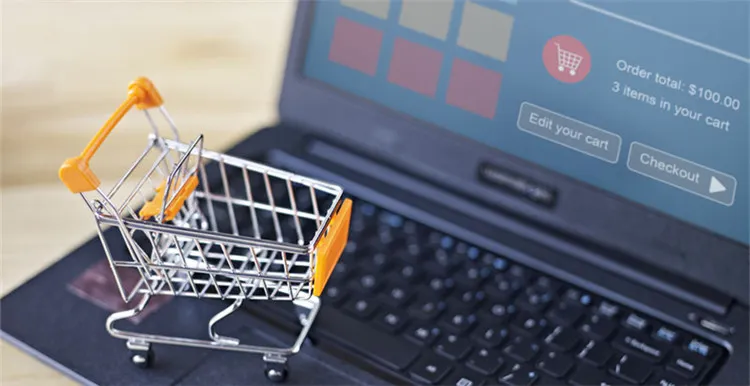Why Are Second-Hand Trading Platforms So Popular?
Second-hand trading is not a new concept. Dating back to ancient times, people exchanged or sold items they no longer needed through marketplaces or face-to-face transactions. Over time, second-hand trading gradually moved from offline to online, evolving into the widely popular second-hand trading platforms we know today, driven by advancements in internet technology.
The Evolution of Second-Hand Trading Platforms
The rise of second-hand trading platforms can be traced back to the early 1990s. With the proliferation of the internet, e-commerce began to take shape, offering a new way to trade. eBay, one of the first global online auction and second-hand trading platforms, was founded in 1995, marking the beginning of the digital era for second-hand trading.
Craigslist, also founded in 1995, is another pioneer in the second-hand trading space. It started as a local electronic bulletin board and gradually evolved into a global second-hand marketplace covering multiple categories.
In the 21st century, with the rise of mobile internet, the model of second-hand trading platforms shifted. More platforms focused on local transactions and mobile-friendly experiences, such as OfferUp and Facebook Marketplace. These platforms have significantly expanded the second-hand goods market by leveraging the convenience of mobile apps and the power of social networks.
Popular Categories in Today's Second-Hand Goods Market
Today, the second-hand goods market covers all aspects of life, with several categories particularly popular, attracting a large number of buyers and sellers.
- Second-Hand Electronics: Electronics are updated quickly, and many people choose to buy second-hand smartphones, laptops, tablets, and more to save money. High-quality second-hand electronics, especially branded items like Apple and Samsung, are in great demand.
- Second-Hand Clothing and Luxury Goods: The second-hand fashion market has grown rapidly in recent years, especially among younger consumers. The market for second-hand luxury brands is also booming, with many opting to buy high-end brand items at relatively lower prices.
- Second-Hand Cars: The second-hand car market has long been one of the largest segments in the second-hand trading industry. With rising car prices and unstable new car supplies, second-hand vehicles have become the first choice for many consumers.
- Second-Hand Furniture and Home Goods: Especially for those who love DIY and vintage styles, the second-hand furniture market is highly attractive. Buying second-hand furniture is not only economical but also reduces resource waste.
- Second-Hand Books: Students and book lovers often seek out second-hand textbooks, novels, and rare books. Buying second-hand books saves money and extends the life of these valuable resources.
Comparison of Major Second-Hand Trading Platforms
As the second-hand goods market thrives, various trading platforms have emerged. Below is an introduction and comparison of some of the major platforms:
- Craigslist
- History: Founded in 1995, Craigslist is one of the earliest second-hand trading platforms, mainly serving local markets.
- Features: It is a simple classified ads website where users can post various items for free. Due to its straightforward design and operation, Craigslist is ideal for users who want to quickly sell items without complicated processes.
- Drawbacks: It lacks built-in payment systems and buyer-seller protection mechanisms, so users need to be more cautious during transactions.
- Facebook Marketplace
- History: Launched in 2016, Facebook Marketplace quickly grew, leveraging Facebook's massive user base.
- Features: Facebook Marketplace combines the advantages of social networking, allowing users to browse and list second-hand items easily on a familiar platform and directly contact sellers. Its location-based feature makes local transactions more convenient.
- Drawbacks: Although its social features are strong, the platform's moderation and quality control are relatively weak, requiring users to judge the authenticity and quality of items themselves.
- eBay
- History: Founded in 1995, eBay is one of the most well-known global online auction and second-hand trading platforms.
- Features: eBay allows users to trade through both auctions and direct purchases, covering a global market. The platform offers comprehensive buyer and seller protection, with a wide range of product categories that cover almost all types of second-hand goods.
- Drawbacks: eBay's fees are relatively high, especially for sellers. Additionally, due to its global nature, shipping times and costs can be high.
- OfferUp
- History: Founded in 2011, OfferUp focuses on local transactions, especially on mobile devices.
- Features: OfferUp has a modern interface and simple operation, allowing users to quickly upload items by taking photos with their phones and communicating directly with local buyers. The platform also provides a rating system for buyers and sellers, enhancing transaction safety.
- Drawbacks: While OfferUp is popular in local markets, its global influence is relatively small. In some regions, the number of users may be insufficient, affecting the breadth of transactions.
Conclusion
From early electronic bulletin boards to today's highly developed digital platforms, second-hand trading platforms have undergone significant changes. Whether it's second-hand electronics, luxury goods, or cars and furniture, these platforms offer consumers convenient purchasing channels. When choosing the right platform, users should consider platform features, user experience, and transaction safety. Craigslist, Facebook Marketplace, eBay, and OfferUp each have their unique advantages and contribute to the prosperity of the global second-hand goods market. As technology advances and consumer attitudes shift, the future of second-hand trading platforms looks even brighter.














